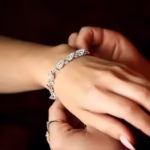Custom embroidery digitizing is the process of converting artwork or logos into a digital file that embroidery machines can understand. This transformation involves turning a design into a series of instructions, commands that tell the machine how to place threads, in what color, and in what sequence. With the growing popularity of custom-embroidered clothing, accessories, and promotional products, digitizing has become a critical component of the custom embroidery industry.
Whether you’re looking to embroider a company logo, a personalized gift, or custom apparel for an event, understanding the intricacies of custom embroidery digitizing can help ensure a clean, professional result. Let’s dive into the key aspects of this fascinating process.
What is Embroidery Digitizing?
Embroidery digitizing is the technical process of converting vector art or images into a file format that an embroidery machine can read. It’s more than simply uploading a design into a machine; it involves creating stitch patterns, selecting thread types, determining stitch direction, and setting up other parameters to ensure that the final product is visually appealing and durable.
The Digitizing Process: Step by Step
Here’s how custom embroidery digitizing typically works:
Design Preparation
The first step is preparing your design. If you’re working with artwork, it’s important that the image is high-quality and clear. Designs should ideally be vector files (like .AI or .EPS formats) or high-resolution images (such as .PNG or .JPG) for the best results. If necessary, adjustments may be made to optimize the design for embroidery.
Software Conversion
The prepared design is then imported into embroidery digitizing software (e.g., Wilcom, Hatch, or Truspeed). Here, the software converts the design into a digital embroidery file. This step involves creating an outline, setting the stitch type (satin, fill, run, etc.), and laying out the stitch paths.
Stitch Density and Type
The digitizer chooses the appropriate stitch types for different elements of the design. For example, a logo may use a satin stitch for clean, sharp edges, while background areas might use fill stitches for a more textured look. Stitch density (how close or far apart stitches are) is also determined during this stage.
Thread Color Selection
Thread colors must be carefully selected to match the design. Most embroidery machines use standard thread brands, and it’s crucial to choose colors that will show up well on the fabric. Additionally, color transitions must be programmed to ensure smooth changes between shades.
Testing and Adjustments
Once the design is digitized, a test run is performed on the embroidery machine. This sample allows the digitizer to check the stitching order, accuracy of the design, and overall look. Adjustments are often made to avoid problems like puckering or thread breakage.
Final Output
After testing and fine-tuning, the final embroidery file is saved in a format compatible with the specific embroidery machine (e.g., .DST, .PES, .EXP). This file can now be loaded onto the machine to produce the custom embroidery.
Key Factors to Consider in Custom Embroidery Digitizing
To ensure a high-quality final product, there are several factors to consider during the digitizing process:
Stitch Types and Density
Different elements of a design require different types of stitches. For example, a clean, smooth logo might use satin stitches, while a textured background may require fill stitches. The stitch density is also essential, as too many stitches can make the fabric stiff, while too few may result in an incomplete or weak design.
Fabric Type
The type of fabric being used for the embroidery plays a significant role in the digitizing process. Soft fabrics like cotton and t-shirts may need lighter stitches to avoid puckering, while heavier materials like denim or jackets might require more robust stitching.
Thread Type and Quality
High-quality threads are essential for durability and color vibrancy. Polyester and rayon are the most common types of embroidery threads, with rayon providing a glossy finish and polyester offering high durability.
Design Complexity
Intricate designs with fine details (like small text or thin lines) can be challenging to digitize, as these may not translate well to embroidery. Simplifying such designs or using smaller fonts is often necessary for the best results.
Stitch Direction
The direction in which stitches are placed can affect both the look and the durability of the embroidery. Strategic stitch direction can enhance the texture and appearance of the design, particularly when working with gradients or shading.
Benefits of Custom Embroidery Digitizing
- High-Quality Results: When done properly, custom embroidery digitizing ensures that designs look professional, are durable, and hold up well over time.
- Brand Consistency: For businesses, embroidery digitizing ensures that logos and brand images remain consistent across all products, enhancing the brand’s visibility and recognition.
- Customization: Custom embroidery offers endless possibilities, allowing businesses, teams, and individuals to create one-of-a-kind designs tailored to specific needs or preferences.
- Versatility: Embroidered designs can be applied to a variety of fabrics and materials, making embroidery digitizing a versatile option for everything from hats and jackets to bags and towels.
Challenges in Custom Embroidery Digitizing
While custom embroidery digitizing has many advantages, it also presents some challenges. The most common issues include:
- Design Compatibility: Not all designs can be easily converted into embroidery files, especially those with small text or extremely fine details.
- Fabric Limitations: Some fabrics, such as stretchy or highly textured materials, can present difficulties for embroidery machines, which may require extra adjustments.
- Time and Expertise: The digitizing process requires skilled professionals with a keen understanding of how designs will translate into stitches, which can be time-consuming.
Conclusion: Why Custom Embroidery Digitizing Matters
Custom embroidery digitizing is an essential service for anyone looking to turn their designs into beautiful embroidered works of art. By understanding the complexities involved in digitizing, businesses, creators, and designers can ensure their final products are not only aesthetically pleasing but also functional and long-lasting.
When executed well, custom embroidery digitizing elevates your brand, personal projects, or event merchandise. Whether you’re designing a corporate uniform, a commemorative item, or a personalized gift, the quality of your embroidery will depend largely on how well your design is digitized.
- Custom Embroidery Digitizing: Art of Transforming Designs into Stitches
- Embroidery digitizing is the technical process of converting vector art or images into a file format that an embroidery machine can read.
- Custom Embroidery Digitizing
Related posts:
 The Ultimate Comparison: Best Men’s Hair Pieces in the Market
The Ultimate Comparison: Best Men’s Hair Pieces in the Market
 The Cozy Edit: Explore Home Decor Trends with UK Wholesale Suppliers
The Cozy Edit: Explore Home Decor Trends with UK Wholesale Suppliers
 How Fashion Shapes Everyday Life: More Than Just What You Wear
How Fashion Shapes Everyday Life: More Than Just What You Wear
 What Should You Look for in High-Quality Streetwear Today/The Foundation of a Great Fit
What Should You Look for in High-Quality Streetwear Today/The Foundation of a Great Fit
 A Complete Guide to Travis Scott Utopia Merch Drops and official store
A Complete Guide to Travis Scott Utopia Merch Drops and official store
 Tips for Buying the Perfect Vintage Engagement Rings for Women
Tips for Buying the Perfect Vintage Engagement Rings for Women
 Smart Ways to Finding the Perfect Ideal Diamond Bracelets for Women
Smart Ways to Finding the Perfect Ideal Diamond Bracelets for Women
 Why Audemars Piguet Remains a Timeless Icon in Luxury Watchmaking
Why Audemars Piguet Remains a Timeless Icon in Luxury Watchmaking




